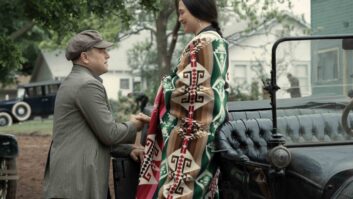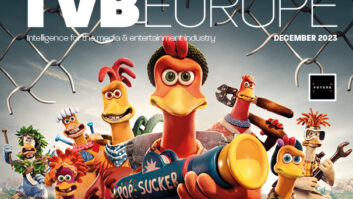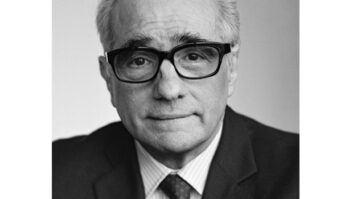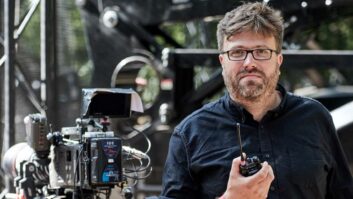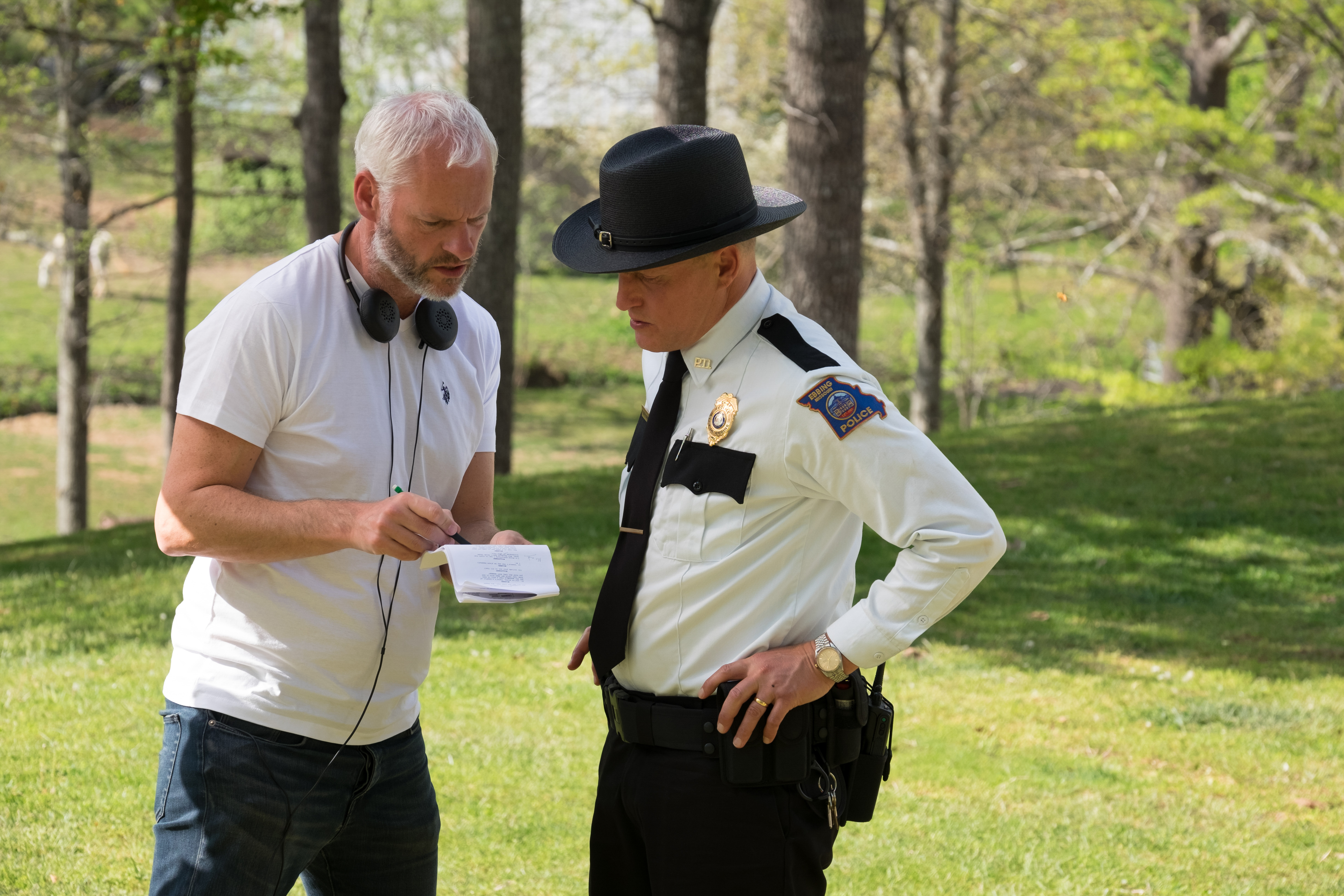
Grief and rage can find strange outlets. Nearly a year after her daughter’s murder, Mildred Hayes (Frances McDormand) expresses her outrage by buying up advertising space on three adjacent roadside billboards in Ebbing, Missouri. She arranges for a series of simple yet bold declarations to be displayed on each, which take Ebbing’s police force to task for not having apprehended the killer.
Three Billboards is the newest feature from writer/director Martin McDonagh. Long known for his acclaimed work as a playwright, McDonagh’s twisted yet captivating characters and scenarios have also made for compelling film viewing, starting with his directorial debut Six Shooter, which earned an Academy Award in 2006 for Best Live-Action Short Film, and followed by In Bruges (shot by Eigil Bryld) and Seven Psychopaths.
For the latter, the director selected director of photography Ben Davis, BSC, who reteamed with McDonagh for Three Billboards.
Davis has amassed a wide variety of credits, ranging from Mathew Vaughn films (beginning with Layer Cake) to a trio of Marvel features (the first instalment of Guardians of the Galaxy, Avengers: Age of Ultron and Doctor Strange).
“Martin writes quickly,” remarks the cinematographer, “and for all I know he may have done this in just a matter of weeks, but he had been planning it for quite some time. I did know he wanted to write something for Frances [McDormand], but when the script arrived, it was a bit of a revelation. I mean, it’s always like a gift when Martin writes something new, but this really impressed me. There are things I don’t understand about his thought processes, but I actually like that as it can force me to discard preconceptions and look at things fresh.”
One preconception the cinematographer put aside came with the selection of a shooting location. “It was always planned to be done entirely on location, but the specifics of that location were very much in Martin’s head,” Davis continues. “He scoured the United States, going everywhere trying to find something matching his vision – with the proximity of billboards to the house and how the police station and town are positioned. These were all very specifically laid out [in his mind]. I didn’t think he’d find it all in one location, but in Sylva, North Carolina, he succeeded. I was actually surprised by the location ultimately selected, having imagined a drier kind of Paris, Texas landscape rather than this green smoky feel.”
Both director and DP have a history of preferring 35mm film origination, but in this regard, this feature was a departure for them. “We love that medium, but I took Martin down the digital route, and he agreed with that approach because ultimately he is most concerned with the performances. Having a good, pure image on the monitor made a huge impact on him; it was far superior to what you’d get with a video tap on a film camera, and it let him evaluate all the visual nuances to make sure they came through.”
The choice of camera was a more straightforward call.
“Personally, I like the look [ARRI] Alexa gives me, as well as how the camera is built and functions,” says Davis. “My philosophy with shooting digital is to break down the image in some fashion or other, and older generation anamorphics like our Panavision C- and E-series lenses [courtesy of Panavision Woodland Hills] really help with that. We agreed about shooting in 2.35, since that let us frame for our many scenes with multiple characters; scope [aspect ratio] also lets you keep one character in close-up while retaining another mid-ground element.
”During prep, the art department developed the graphic look for the billboards. “I saw renditions of the billboards in various colours and typefaces, and again I was really surprised by Martin’s final selections,” Davis admits. “Black writing against red had me going, ‘Wow! That’s a real statement.’ It was quite a departure from the expectation of a typical white background, but after they were built and set in the landscape on the side of that road, they really popped against the greenery.”
The police station was modified from an existing thrift shop. “In most cases, art direction and design were dictated more by location than the other way around; we liked what we found, then just tried to add nuance to that found look.”
Davis finds that shooting on location on a low-budget film requires a lot of coordination with the 1st AD. The other necessity is forethought. “I would make a point of taking time to sit at those locations during prep, spending a day or so to work up a good plan about time of day for the various scenes. There was one very emotional scene for Frances that made me pull Martin aside and tell him I thought it needed to happen at dusk rather than any other time of day. Martin might justifiably be wary of that because capturing the performance in a limited period of time can be scary for any director, but we finally decided that if we didn’t get it done in time, then we’d come back. The scene was just that important. I honestly think it benefitted from the intense focus everyone brought. If we’d had a full day to get that, it might not have worked as well.”
Production’s lighting requirements were carried in a single truck. “I liked the flexibility to be mobile and respond quickly, so we relied a lot on small HMI and tungsten packages,” says Davis. “I don’t think we used 18Ks at all, and even for big night scenes I only used the 4×4 LED panels.” For most interior scenes, in-frame practicals were usually just accent lights, with off-camera units supplying the necessary footcandles.
While the cinematographer is not averse to employing multiple cameras, he did so judiciously, and only when such an approach didn’t compromise the desired look of a scene. “I didn’t think my end of things was to make things stand out, either with flat light or by moving the camera in some unique way. Those are the kinds of things that distract from the performances and the dialogue. On another film, you might be able to achieve something effective and quite beautiful by using wide shots and shooting people’s backs during a dialogue scene, but that approach doesn’t service Martin’s work in the same fashion. The audience needs to be positioned very close to these people so they can see how the camera captures subtle changes in the characters as the story progresses.
“We wanted the actors to have free rein to bring out the best in these characters, so we’d wait till blocking was worked out before locking down the framing and lighting. We also wanted to capture some sense of the town, even when it was just background to these intimate scenes, since Ebbing itself is a kind of character in the film. So making sure the camera was shooting the right part of the town during these character moments was another important aspect.”
Davis worked from a basic film emulation LUT. “On some of the bigger films I’ve made, I found that if you start using multiple CDLs, they can get lost or confused when the workflow expands to include visual effects. So keeping things as stripped down as possible is definitely part of my philosophy. I wasn’t interested in on-set grading, so if I wanted a particular look, I lit and photographed the scene to achieve that on the day, same as the old shot-on-film approach. The imagery was processed at the production office via Mobile Lab [Pinewood Digital provided dailies support], then delivered to editorial.” Goldcrest Post digital intermediate colourist Adam Glasman handled the DI.
Currently at work on Tim Burton’s Dumbo, Davis finds himself considering the choice of filmmakers he works with to be nearly as significant a matter as the scripts he receives. “At this point in my career, I’m coming to like more and more working with directors who are going to surprise and challenge me, and Martin is certainly one of those,” he says. “He set a standard for us all, and the professionalism of both cast and crew came through on so many levels that it made this a much easier film to make than you might expect.”
